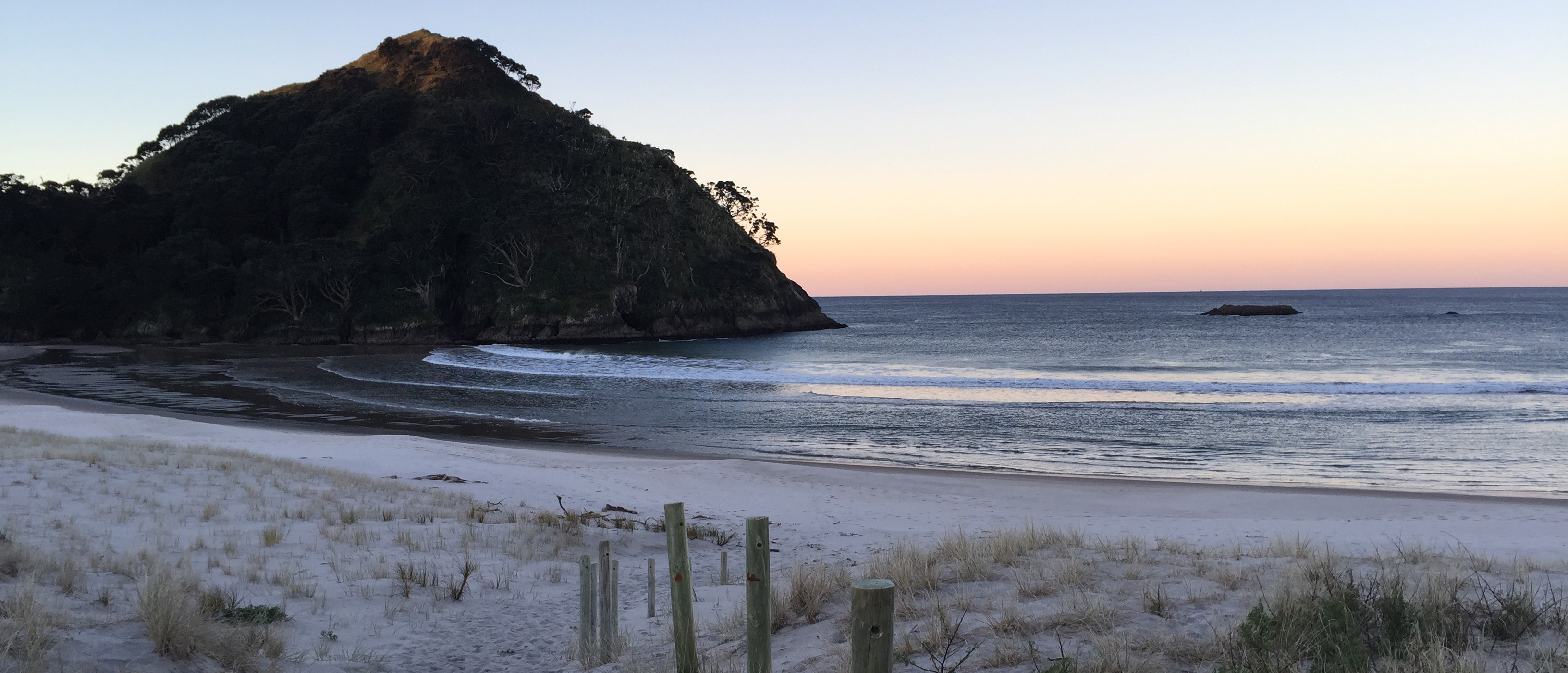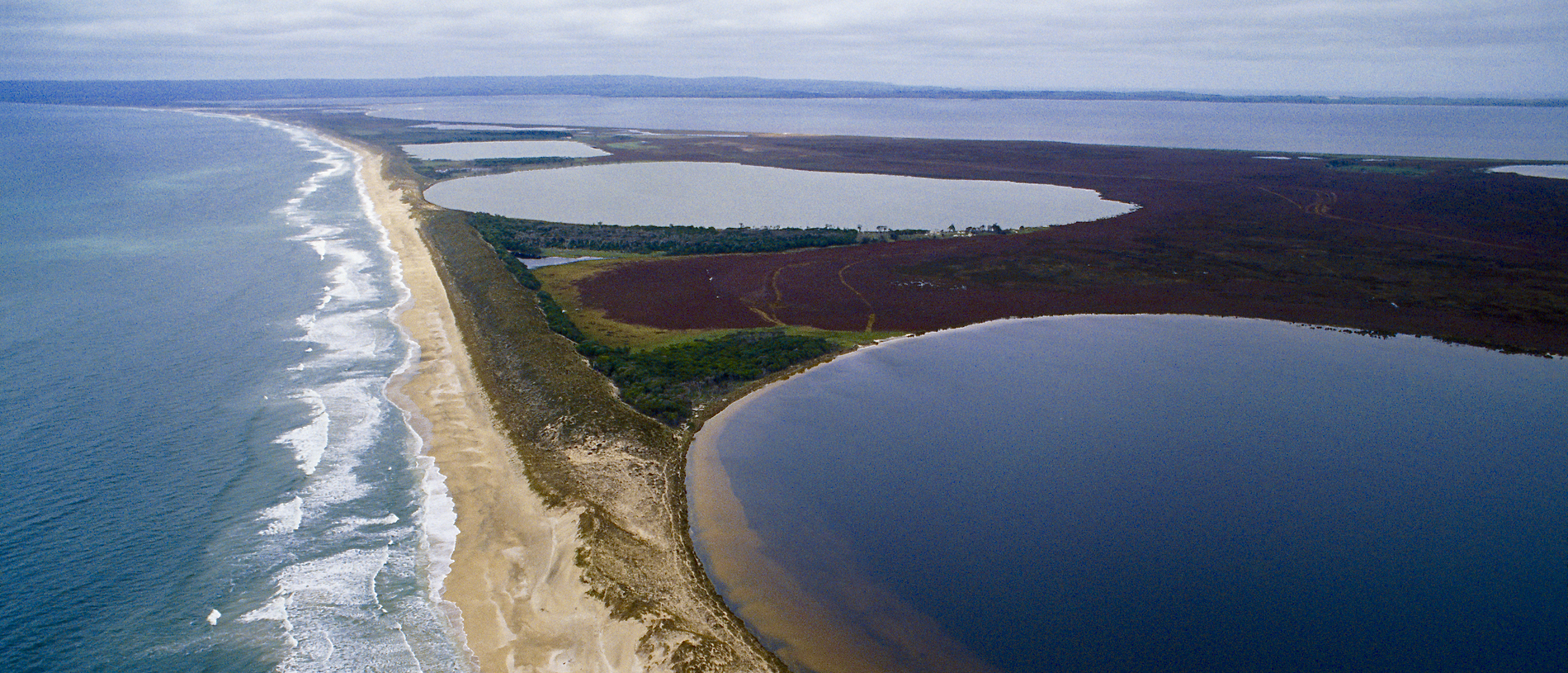
Great Barrier Island: a rugged road trip
It’s as if a chunk of Coromandel Peninsula floated off to the north. There’s the surf beach side and the quieter bay side, like Coromandel, with the steep choppy spine in between.

You can tell a lot about an island from the rubble at its edges.
On the shores of the Chatham Islands, amongst the fishing nets, tractor parts and scallop shells, I find wave-smoothed crockery shards from the huts of long-ago whalers and sealers.
If you could see them from above, the Chatham Islands would look like an apple nibbled down each side, with a few dropped bits floating around the edges, leaving the core, holder of the seeds, which could be the numerous black swans swimming in Te Whanga Lagoon.
These are the magic isles that enjoy ‘fine spells’ as a coda to the weather forecast for the benefit of their 600 inhabitants. “It will be freezing,” someone said before I left. And: “There are no cars.” But I swim three times on warm beaches, which I reach by vehicle.
The government affords the Chathams a mere kilometre or two of new tar-seal per year, so the sealed road extends like a black glacier.
Exploring the islands, we find black shark-tooth fossils amongst the kina spines at Blind Jim’s Creek; a seal colony; miniature bamboo species in a peat bog; Māori and Moriori art, including the enigmatic dendroglyphs (pictures on trees) in the kopi groves of Hapupu Reserve. Hexagonal basalt columns of cooled lava march up from the surging waters at Ōhira Bay, forming a natural Grecian amphitheatre complete with the stray memento mori of a weathered goat carcass.
When the sun goes down and visitors have retreated to their suites at the Hotel Chatham, the pub fills with deckhands and rousies.
The Chatham Islands Festival, held each year in March, features food plucked from land, sea and air, local arts and crafts, shearing competitions, eating competitions and local musicians.
Swan pizza, while not about to appear on the board at Domino’s, would appeal to those who like jerky. Weka is even gamier – yes, you are allowed to hunt and eat it here, despite the fact that Chatham Islanders self-identify as Weka, where mainlanders call themselves Kiwi.
My favourite kaimoana is the Hotel Chatham’s fish chowder and the paua wontons at the festival, crisp and yellow, soaking into the paper towel and reddening my fingertips with their heat, as I bite into the blue-black meat. It is the abundance of marine life that makes a living for so many Chatham Islanders, as vast quantities of it reappear on tables in China and America.
From nearby Pitt Island, we spot other islands, including predator-free South East, or Rangatira Island, haven to the Chatham Island black robin and home of the fearsome weta-devouring Rangatira spider, of which even pig hunters are afraid.
Every so often, we are told, a human skull or an old tool falls out of a sandy cliff. Most of Pitt Island must be tapu in some way or other.
Through mushroom-dotted pasture, feral geese accompany us towards a respectfully neatened patch of short grass on which stands the small white church of Our Lady of the Antipodes. Colourful Catholic icons create a numinous feeling inside, so far from Rome. Looking out through the window I see late blooms of yellow rautini: Chatham Island Christmas tree. Its botanical name is Brachyglottis huntii, after Frederick Hunt, the first European to make a go of life on Pitt, in 1843.
There is a school on Pitt too, surprisingly well-resourced for a roll you can count on one hand: plenty of books, a plant nursery and orchard, a pool and a computer per child. Some of them are away riding on the annual Pitt Island cattle muster, which we get stuck behind on the trail back to the bay.
With the International Dateline bending around us, Chatham Islanders are among the first humans to see the sunrise and it is this that tells us to start out and make the most of the day.
Story by Pippa Strom.